Nichole Holdorph tells her story of help, hope and healing after lower leg amputation.
When Nichole Holdorph, server and cook at Hungry House in Ooltewah, TN, became sick in 2018, she never would have anticipated the turn of events that would lead to a lower leg amputation. A person may need an amputation for a number of reasons – limited or no blood flow to an area of the body, an accident that damages a limb, or an infection that’s quickly spreading. If a surgeon recommends an amputation, the situation is likely dire.
For Nichole, this life-changing event happened with little warning. She had been sick for about three days and couldn’t hold anything down. When her condition worsened, Nichole’s mom took her to the hospital. There, to her great surprise, she was diagnosed with type 1 diabetes and several blood clots were discovered in her leg. Her doctors couldn’t determine which came first – the blood clots or the diabetes.
“This whole situation was completely out of the blue, and they still don’t know what caused the clots. My initial vascular surgeon, Dr. Clark, made three attempts to release or break up the clots in my legs. I’m 4’11” and very petite and was told I have very small veins. On the third procedure, she had to make the decision to remove my leg because it was dying,” shares Nicole. “All my life I’d been healthy – and never dreamed something like this could happen to me.”
LIFE AFTER AMPUTATION
For many people, even the idea of losing a limb can be terrifying. There’s often a profound sense of loss – but there’s also hope for living a full and functional life. After her surgery, Nichole went to Standifer Place for rehabilitation, where they taught her to bathe and stand on one leg while helping her build up her strength. Nichole shares that she was depressed during that time and went through all the emotions – denial, anger, sadness.
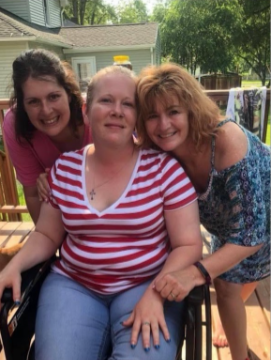
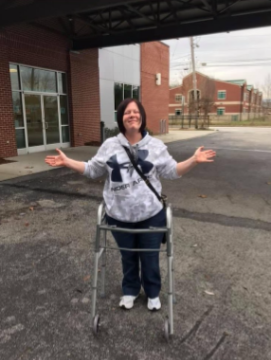
On top of the physical stress of an amputation, Nichole couldn’t afford the cost of a new prosthesis and was going through the process of securing disability. She was using a scooter to get around – including going back to work – before she discovered that the cost of her prosthetic leg had been donated.
“Traci, the prosthetist at University Surgical, met me right after my surgery, and she knew that it would be difficult for me to afford a prosthetic leg. But I never dreamed that they could or would do something like this to help me. Just less than a year after my amputation, I was fitted for my new leg, and Traci helped me learn to start walking again,” Nichole shares.
After she was fitted for her prosthesis, Nichole began the difficult work of regaining her balance and learning to walk unassisted. She started by using a walker, then gradually transitioned to a cane for a few months. Traci gave Nichole a wearing schedule for her leg – starting with three hours, then four, then gradually working up to wearing it all day.
“One day, I put on my leg, and I didn’t need assistance anymore – I had my balance and could walk like I wanted to,” Nichole says.
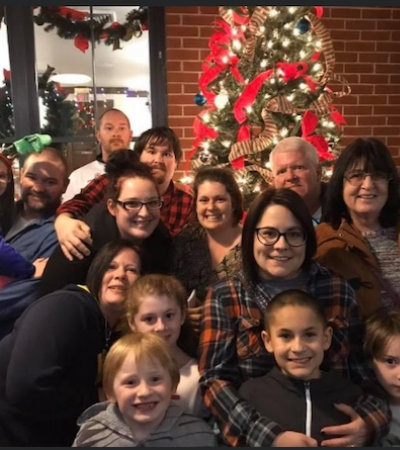
THE ROAD TO RECOVERY
Nichole’s journey hasn’t been an easy one, but she notes that having a positive attitude and a great support system are the keys to getting through a very difficult time.
“I’ve told my mom many times – I don’t know why this happened to me or why I was chosen to go through this experience, but there has to be a reason. All I know is, I’m not going to let it stop me from doing the things I want to do. Things are different, but they can still be good,” Nichole says. “I also don’t know what I would have done without the support and love of my family, who pushed me to get better. This extends to the surgeons at USA who continued to care for me and to Traci and her group. They were there when I needed them, and I’m not going to let anything stop me from living my life.”
Prosthetics – Finding the Right Fit
The USA prosthetics team is a knowledgeable group of professionals who are there to support amputees with any questions and concerns. They’re also there to ensure you are fitted with the best prosthetic device that aligns with your goals and plans for the future – including your health concerns, activity level and cosmetic choices verses functionality.
To learn more, visit our USA Prosthetics page or call 423-267-0466.

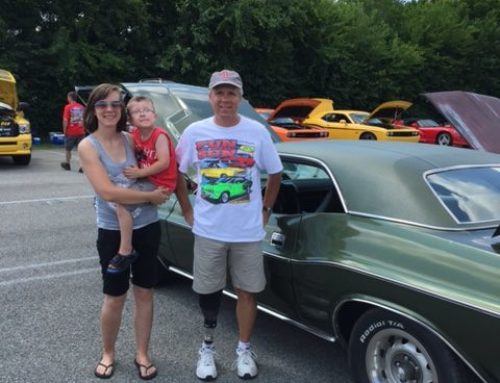
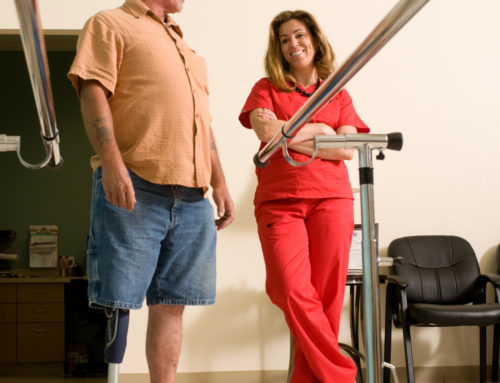


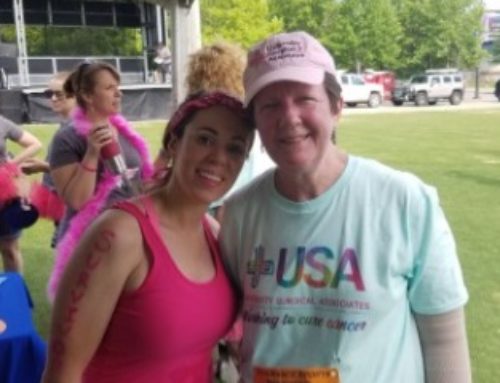

Leave A Comment